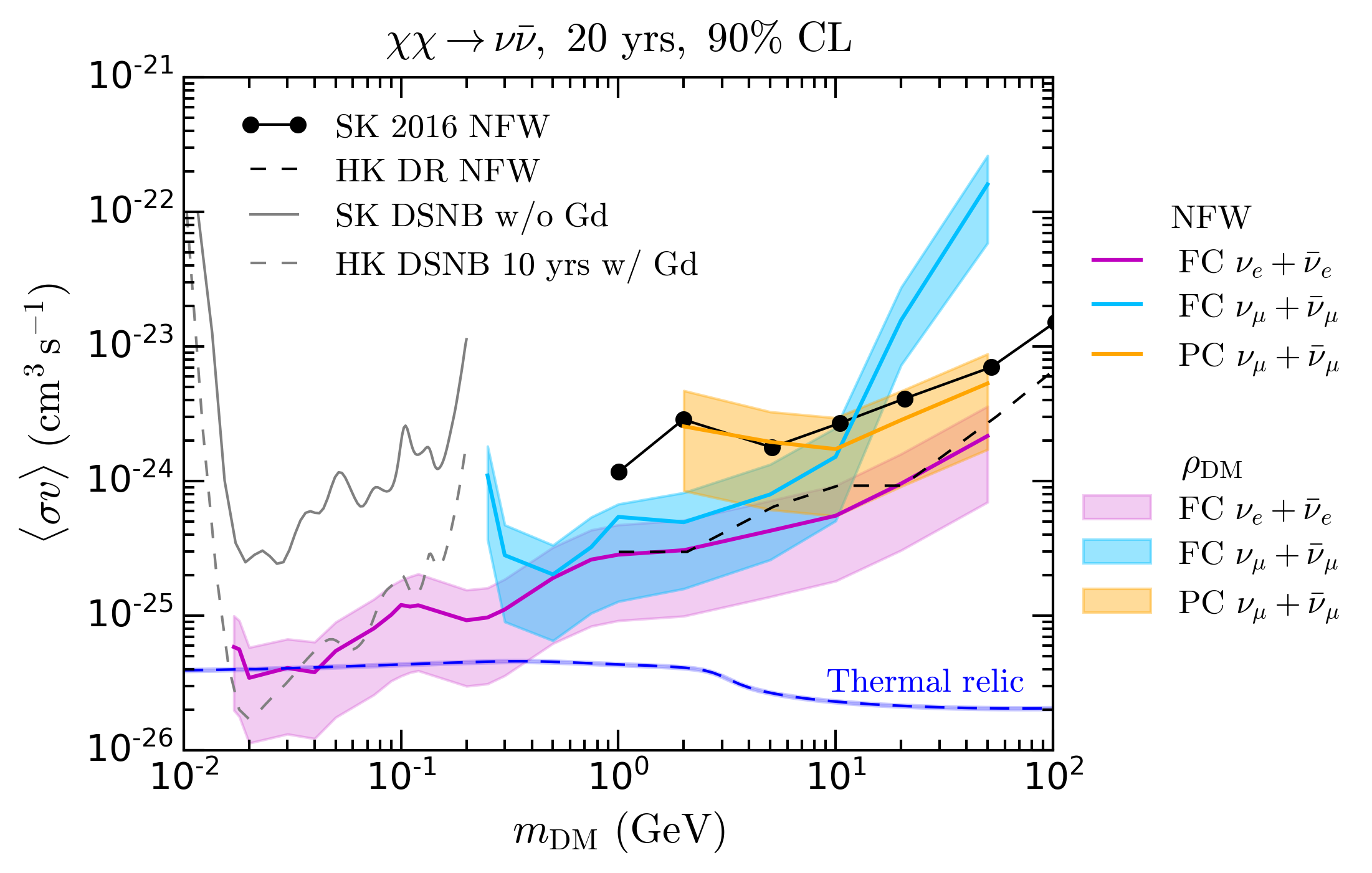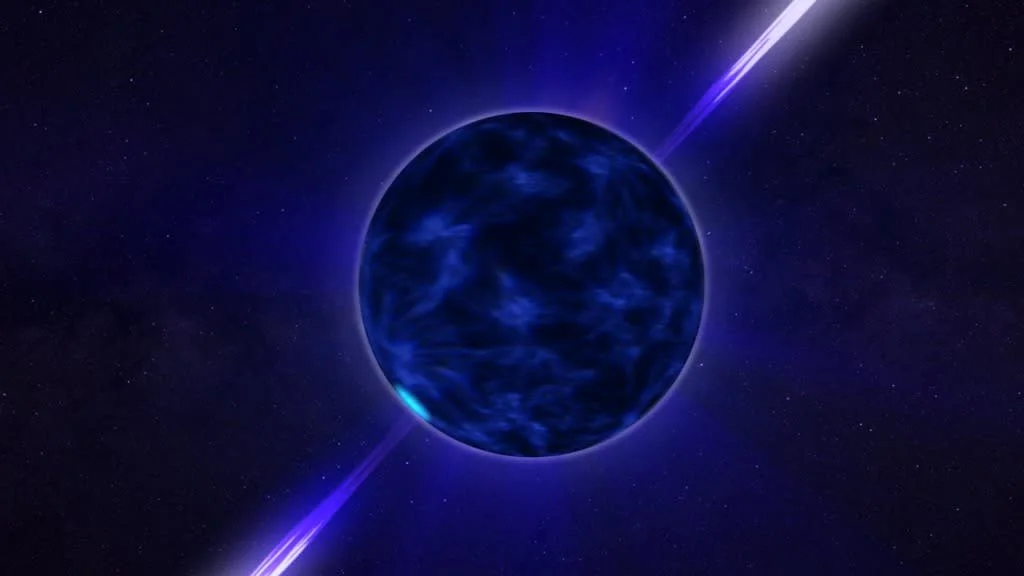Astroparticle physics
Astrophysics provides evidence for the existence and distribution of dark matter via gravitational effects. In addition, we can use astrophysics and cosmology data to learn about dark matter’s non-gravitational interactions, providing information about the particle nature of dark matter complementary to that obtained in experiments on Earth.
Indirect detection: Indirect detection is the search for dark matter annihilation or decay products from regions of high dark matter density, such as the centre of our galaxy, external galaxies, or from the sun. By exploiting the differences between a true dark matter signal and background astrophysical processes, we extract novel information from neutrino, gamma-ray, cosmic ray measurements.
Projected limits on the annihilation of dark matter to neutrinos, at the forthcoming HyperKamiokande experiment. [Figure taken from Bell, Dolan and Robles, JCAP 09, 019 (2020).]
Astrophysics simulations: We use computational simulations of galaxy and large-scale-structure formation to constrain the distribution of dark matter within galaxies for various dark matter candidates. This information is then used to interpret the results of direct and indirect detection experiments. We also study the astrophysical implications of certain theoretical dark matter models, such as self-interacting and ‘warm’ dark matter models. These simulations provide a link between the underlying particle physics of dark matter and astrophysical observations.
Astroparticle techniques: The stars provide cosmic laboratories that enable us to study how dark matter particles behave, often under extreme conditions that cannot be replicated on Earth.
For instance, the collisions of dark matter with atomic nuclei – the same interactions searched for in direct detection experiments on Earth – can lead to the capture of dark matter particles in the Sun, neutron stars, and other astrophysical objects. The presence of WIMP-like dark matter in neutron stars can change the properties of the stars in important ways that we calculate and test.
We can also use astrophysical data to learn about axion-like particles. Axions can be produced in hot objects like stars, contributing to stellar cooling, or through axion-photon conversion in cosmic magnetic fields.
We perform detailed calculations of these processes, to identify, quantify and interpret observational measurements that are sensitive to these dark matter candidates. In fact, we can even use these techniques to learn about particular types of dark matter that would be difficult or impossible to detect on Earth.
Illustration of a neutron star/NASA
Astroparticle physics in the news: Using neutron stars to detect dark matter


